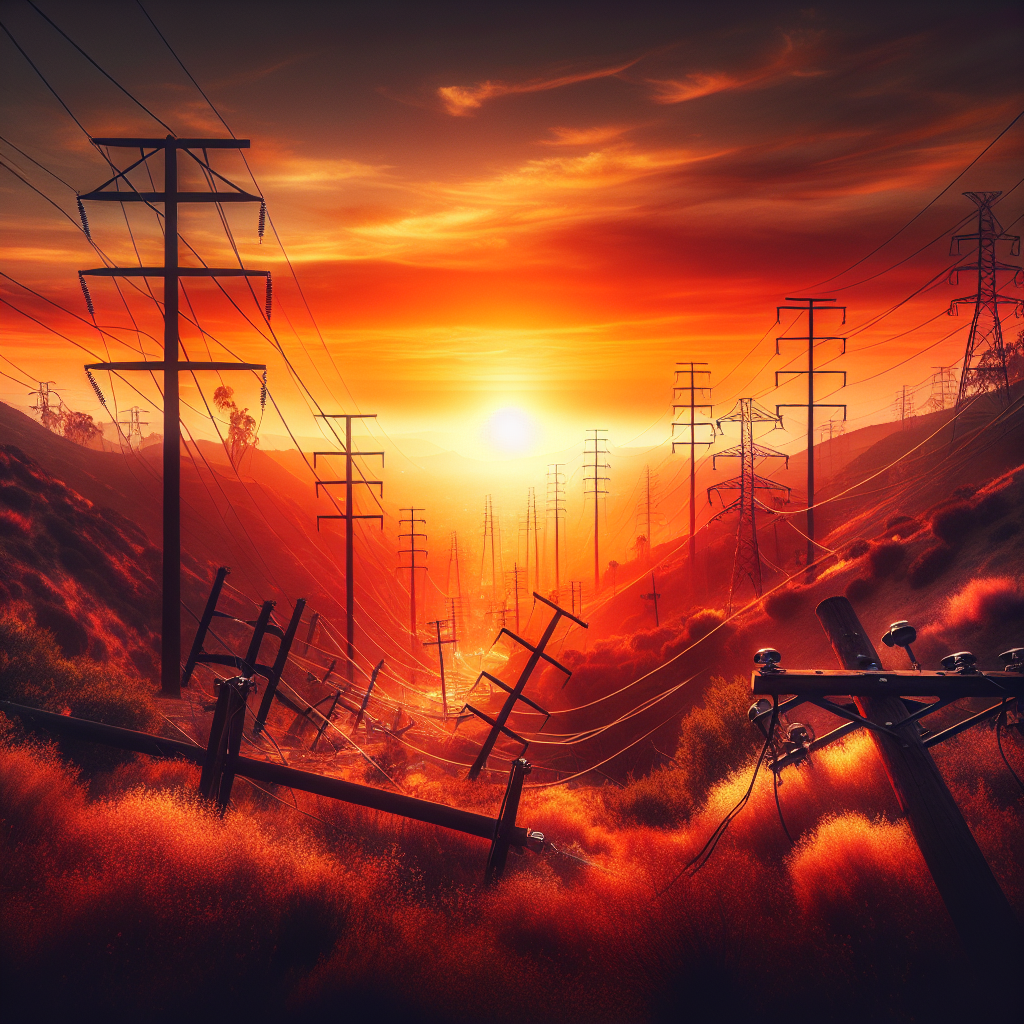Introduction to pge outageIn recent years, the term pge outage has become synonymous with power reliability challenges, particularly in California. Pacific Gas and Electric Company (PG&E) has been at the center of numerous discussions regarding their operational protocols during adverse weather conditions. As wildfires wreak havoc throughout the region, PG&E has implemented preemptive shut-offs to mitigate fire risks. While these outages can be necessary for safety, they also cause significant disruptions to daily life.One term you may frequently encounter is Public Safety Power Shutoff (PSPS). This safety measure allows PG&E to temporarily turn off electricity in specific areas to prevent power lines from sparking wildfires during critical weather events. The intention behind the pge outage is clear—to protect lives, homes, and the environment. However, the extent and frequency of these outages can lead to widespread inconvenience and frustration among residents.In this first segment, we will explore the factors contributing to pge outages, dissect how they are communicated to the public, and identify the impacts these outages can have on communities. Factors Leading to pge outagesSeveral factors contribute to the decision to impose a pge outage. Firstly, the climate in California is increasingly prone to droughts and high winds, especially during the summer and fall months. The combination of dry vegetation and gusty winds creates a perfect storm for wildfires. PG&E, responsible for powering millions of residents, faces immense pressure to manage this risk.Secondly, aging infrastructure plays a crucial role in the frequency of outages. Many of PG&E’s power lines and equipment date back several decades. While the company has invested in upgrades, significant portions of the grid still rely on outdated technology. This lack of modernization contributes to the potential for equipment failure, leading to fire dangers and subsequent outages.Thirdly, regulatory responses have shaped how PG&E navigates power management. Legislative measures have been put in place, urging utility companies to prioritize safety. Consequently, PG&E finds itself enacting preventive shutdowns, which, although well-intentioned, can lead to prolonged blackouts impacting everything from homes to local businesses.Communication During pge outagesWhen a pge outage is initiated, effective communication is key. PG&E has developed various channels to inform the public about impending outages, including phone calls, text messages, and their online outage map. Despite these efforts, many residents report feeling blindsided by the sudden nature of these shutoffs, owing to a lack of timely updates or clarity about expected durations. In recent years, PG&E has aimed to improve its communication strategies by collaborating with community agencies and using social media platforms. These efforts serve not only to notify residents but also to provide safety tips for navigating power outages efficiently. Understanding the communication landscape during a pge outage can help residents feel more connected and prepared.Impacts of pge outagesThe impacts of a pge outage seep beyond the immediate inconvenience of losing power. For many individuals, medical needs depend on electricity, highlighting a potentially dangerous situation during prolonged outages. Similarly, local businesses face economic strain as they must close their doors without reliable power. What’s more, the collective mental toll of uncertainty surrounding these power shutoffs cannot be understated; anxiety about unexpected outages is a palpable reality for many residents.To mitigate these impacts, some people have turned to investing in backup generators or alternative energy solutions. These measures provide a safety net during outages but come at an additional cost that not everyone can afford. Striking a balance between energy safety and community resilience remains an ongoing challenge. Conclusion of Part 1As we move forward in our exploration of pge outages, it’s clear that while the intent may be safety and regulation, the real-world ramifications are complex and multifaceted. Understanding the underlying factors, communication strategies, and impacts of outages not only prepares residents but can also foster community discussions on sustainable solutions moving forward.Part 2: Innovations and Future Considerations with pge outagesAs California grapples with the ongoing challenges of power management, innovative strategies are being proposed to address the persistent problem of pge outage. In this section, we will delve into emerging technologies, community initiatives, and what the future holds for power reliability in California.Emerging Technologies to Address pge outagesAdvancements in technology play a significant role in reshaping how utilities manage their power grids. For instance, the integration of smart grid technology allows for real-time monitoring of power lines and infrastructure. These systems can detect issues before they become critical, potentially reducing the need for widespread power outages.Additionally, energy storage systems, such as batteries, are becoming increasingly popular. By storing excess energy generated during low-demand periods, these systems can supply power during outages. This not only lessens the impacts of a pge outage but also promotes the use of renewable energy sources, thereby fostering a more sustainable energy landscape.Community Initiatives and InvolvementIn response to the challenges presented by pge outages, community organizations are stepping up to provide resources and support. Local groups have begun hosting workshops to educate residents on preparedness during outages, including creating emergency kits and engaging in community-driven conversations about alternative energy sources.Moreover, neighborhoods are forming response teams and networks to communicate during outages effectively. These collaborative efforts help residents share resources, particularly important for those needing medical equipment reliant on electricity. The spirit of community resilience emerges as a vital component in managing the effects of a pge outage.Policy Changes and Regulatory FrameworkAs the conversation surrounding pge outages continues, regulatory bodies are responding with policy changes aimed at improving utility practices. Advocating for stricter regulations on infrastructure maintenance and investments places pressure on PG&E to evolve and modernize their energy systems. Public hearings and community involvement guide these discussions, allowing residents to voice their concerns and advocate for constructive changes. Ensuring accountability for utility companies fosters a more transparent relationship between providers and their customers.Preparing for Future ChallengesLooking ahead, California faces numerous challenges relating to climate change and the increasing frequency of extreme weather events. As residents, it is vital to be proactive in our approach to potential pge outages. This includes staying informed about local regulations, preparing emergency plans, and understanding the resources available during outages.Investing in self-reliant energy solutions and advocating for sustainable practices contribute to the resilience of both individuals and communities. As the landscape continues to evolve, engaging in conversations surrounding energy sources, environmental sustainability, and power management will prove crucial in mitigating the impact of future pge outages.Conclusion of Part 2Through the lens of technology, community initiatives, and regulatory changes, it’s evident that the journey towards improved energy reliability is a collective effort. By embracing innovation and fostering collaboration, Californians can work together to navigate the challenges posed by pge outages and establish a future defined by greater energy security.Final ThoughtsIn conclusion, understanding pge outages requires us to examine the multifaceted challenges involved in power management today. The need for preventative measures driven by the realities of climate change brings significant hurdles while encouraging a discussion on solutions that prioritize safety and resilience.From the factors leading to outages to the strategies for preparation and innovation, being informed is key. As technology advances and community efforts grow louder, we can find hope for a future where the impacts of pge outages are less disruptive, paving the way for sustainable practices that ensure energy reliability for all.By fostering dialogue and preparation, California can emerge stronger, even amidst the uncertainty of power management practices, embracing a future characterized by innovation and community collaboration.










